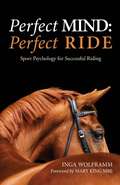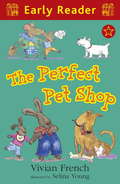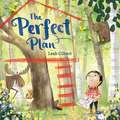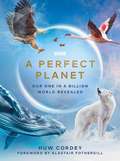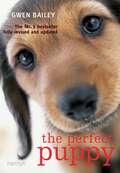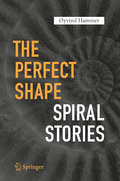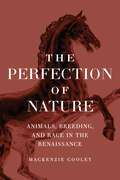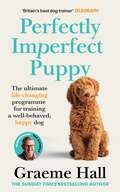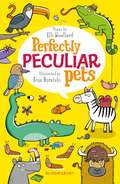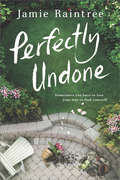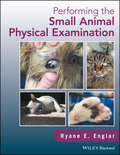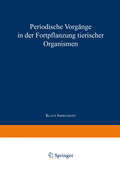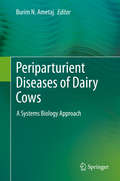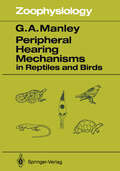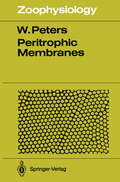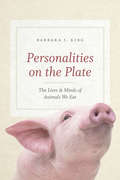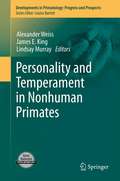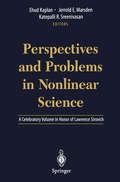- Table View
- List View
PERFECT MIND: SPORT PSYCHOLOGY FOR SUCCESSFUL RIDING
by INGA WOLFRAMMPossessing the right mind-set and relevant mental skills has long been considered vital in achieving top performances in all sports. And yet, to many riders, mental fitness still remains something of an afterthought. In Perfect Mind: Perfect Ride, the author demonstrates how to develop and achieve the right kind of attitude, motivation and mental skills to make the most of the rider's abilities whether it be riding as a recreation or as a competitive sport. Horses are highly sensitive flight animals - they will react first and ask questions, well, never...! In essence, this means that every time riders get on their horse, they need to be fully committed, aware and in control of their body, their thoughts and their emotions, in order to communicate with their horse in precisely the right kind of manner.
The Perfect Pet Shop (Early Reader)
by Vivian FrenchEarly Readers are stepping stones from picture books to reading books. A blue Early Reader is perfect for sharing and reading together. A red Early Reader is the next step on your reading journey.It's all quiet at the pet shop at the end of the day, but the animals want to have some fun - who wants a story?
The Perfect Plan
by Leah GilbertA gorgeously illustrated picture book about a little girl's leadership, creative thinking, and perseverance, for fans of Rosie Revere, Engineer and The Curious Garden.Maya dreams of building a fort-a special, comfy, cozy place to hide out and read, to dream and play. So she goes to work drafting plans and gathering all her supplies. But when she gets to the forest, she realizes she needs help. Thankfully, some new friends have just the right skills to make a perfect fort-building team. Will Maya's fort be everything she hopes? Or could it turn into something she never even imagined?Leah Gilbert's story bursts with inspiration and life, celebrating creativity, leadership, perseverance, and the magic of working together to build a dream.
The Perfect Plan
by Leah GilbertA gorgeously illustrated picture book about a little girl's leadership, creative thinking, and perseverance, for fans of Rosie Revere, Engineer and The Curious Garden.Maya dreams of building a fort-a special, comfy, cozy place to hide out and read, to dream and play. So she goes to work drafting plans and gathering all her supplies. But when she gets to the forest, she realizes she needs help. Thankfully, some new friends have just the right skills to make a perfect fort-building team. Will Maya's fort be everything she hopes? Or could it turn into something she never even imagined?Leah Gilbert's story bursts with inspiration and life, celebrating creativity, leadership, perseverance, and the magic of working together to build a dream.
A Perfect Planet
by Huw CordeyThere is no place like home.The conditions of Earth are not just good for life, they are perfect. Everything about our planet - its size, its distance from the Sun, its spin and tilt, its moon - is perfectly suited to our existence, and our planet's forces serve to nurture its spectacular biodiversity. A Perfect Planet shows in stunning detail how Earth has always been more than the sum of its parts. Unlike any other astronomical body, it is a living world.Focusing on four key natural forces - global weather systems distributing fresh water to all corners; marine currents delivering nutrients to the deepest reaches of the ocean; solar energy warming and electrifying everything it touches; and volcanic activity fertilising the earth's surface - Huw Cordey reveals to us new levels of this living world, a place populated with astonishing characters living remarkable lives. From Arctic wolves prowling moonlit landscapes or wood frogs, frozen in winter and magically thawing back to life, to flamingos flying thousands of miles to a vast volcanic lake in Africa to breed, we see time and again how animals are perfectly adapted to whatever the environment throws at them.Packed with over 250 full-colour images, and including a foreword by David Attenborough and stills from the BBC series' spectacular footage, A Perfect Planet is a stunning exploration of life on Earth - life that is increasingly precious and rare.
Perfect Puppy: Take Britain's Number One Puppy Care Book With You!
by Gwen BaileyGwen Bailey's bestselling puppy care guide has helped hundreds of thousands of owners throughout the world raise a problem-free dog. Now, updated with the latest findings in canine behaviour and a completely new user-friendly design, this revised edition will teach you how to raise a problem-free dog. From housetraining to playing games, it will show you how to teach your dog good manners and build his confidence with the world around him. There are step-by-step training and socialization plans as well as a guide to understanding and preventing biting, chewing and other problems. If you want your puppy to develop into a happy, well-behaved and friendly adult dog, you cannot afford to be without this book.
The Perfect Shape: Spiral Stories
by Øyvind HammerThis book uses the spiral shape as a key to a multitude of strange and seemingly disparate stories about art, nature, science, mathematics, and the human endeavour. In a way, the book is itself organized as a spiral, with almost disconnected chapters circling around and closing in on the common theme. A particular strength of the book is its extremely cross-disciplinary nature - everything is fun, and everything is connected! At the same time, the author puts great emphasis on mathematical and scientific correctness, in contrast, perhaps, with some earlier books on spirals. Subjects include the mathematical properties of spirals, sea shells, sun flowers, Greek architecture, air ships, the history of mathematics, spiral galaxies, the anatomy of the human hand, the art of prehistoric Europe, Alfred Hitchcock, and spider webs, to name a few.
The Perfection of Nature: Animals, Breeding, and Race in the Renaissance
by Mackenzie CooleyA deep history of how Renaissance Italy and the Spanish empire were shaped by a lingering fascination with breeding. The Renaissance is celebrated for the belief that individuals could fashion themselves to greatness, but there is a dark undercurrent to this fêted era of history. The same men and women who offered profound advancements in European understanding of the human condition—and laid the foundations of the Scientific Revolution—were also obsessed with controlling that condition and the wider natural world. Tracing early modern artisanal practice, Mackenzie Cooley shows how the idea of race and theories of inheritance developed through animal breeding in the shadow of the Spanish Empire. While one strand of the Renaissance celebrated a liberal view of human potential, another limited it by biology, reducing man to beast and prince to stud. “Race,” Cooley explains, first referred to animal stock honed through breeding. To those who invented the concept, race was not inflexible, but the fragile result of reproductive work. As the Spanish empire expanded, the concept of race moved from nonhuman to human animals. Cooley reveals how, as the dangerous idea of controlled reproduction was brought to life again and again, a rich, complex, and ever-shifting language of race and breeding was born. Adding nuance and historical context to discussions of race and human and animal relations, The Perfection of Nature provides a close reading of undertheorized notions of generation and its discontents in the more-than-human world.
Perfectly Imperfect Puppy: The ultimate life-changing programme for training a well-behaved, happy dog
by Graeme HallI've been training puppies for years and I am yet to come across one who behaved perfectly at all times. With this book I really wanted to be realistic about the expectations we should have when training a puppy and demystify the process with clear, simple advice, based on science and experience. In this stress-free guide you will learn how to: · Choose the right puppy for your lifestyle, including the benefits of a rescue dog · Introduce them to the family, other pets and children · Tackle separation anxiety · Train your puppy, while building understanding and trust · Socialise them, so they grow into a happy, well-adjusted dog · Prevent behavioural problems later in life I love working with puppies because there is so much potential to make a lasting difference to a dog's life and to their owner's. If you can get it right (or right-ish), you are paving the way for a lifetime of reliably good behaviour. Happy training! Graeme Hall
Perfectly Peculiar Pets
by Elli WoollardFrom armadillos, flamingos and umbrella birds to quokkas and iguanas, Elli Woollard presents a lovely collection of poems for younger children about pets which are just a little bit peculiar... Filled with fun rhymes, quirky black-and-white illustrations and exotic animals, this book is perfect for reading aloud. Some poems are hilarious, some are gruesome and some will make you want to wash your hair, but there's sure to be a pet poem here for every child and adult alike.
Perfectly Peculiar Pets
by Elli WoollardFrom armadillos, flamingos and umbrella birds to quokkas and iguanas, Elli Woollard presents a lovely collection of poems for younger children about pets which are just a little bit peculiar... Filled with fun rhymes, quirky black-and-white illustrations and exotic animals, this book is perfect for reading aloud. Some poems are hilarious, some are gruesome and some will make you want to wash your hair, but there's sure to be a pet poem here for every child and adult alike.
Perfectly Undone: Something Like Happy Best Day Ever Perfectly Undone House Of Shadows (Hq Digital Ser.)
by Jamie RaintreeSometimes you have to lose your way to find yourself
Performing the Small Animal Physical Examination
by Ryane E. EnglarPerforming the Small Animal Physical Examination offers an easy-to-follow guide to successfully executing a thorough physical exam in cats and dogs, with nearly 1,000 clinical photographs depicting step-by-step details. Provides comprehensive, practical information on the physical examination in small animal patients Presents nearly 1,000 color photographs with step-by-step details of the procedures and principles Offers advice on preparing the examination room, useful tips, and concrete guidance for examining each body system Outlines a systematic, in-depth approach to the initial examination in dogs and cats Supports new and experienced veterinarians and veterinary technicians alike in performing a thorough basic exam
Performing the Small Animal Physical Examination
by Ryane E. EnglarPerforming the Small Animal Physical Examination offers an easy-to-follow guide to successfully executing a thorough physical exam in cats and dogs, with nearly 1,000 clinical photographs depicting step-by-step details. Provides comprehensive, practical information on the physical examination in small animal patients Presents nearly 1,000 color photographs with step-by-step details of the procedures and principles Offers advice on preparing the examination room, useful tips, and concrete guidance for examining each body system Outlines a systematic, in-depth approach to the initial examination in dogs and cats Supports new and experienced veterinarians and veterinary technicians alike in performing a thorough basic exam
Perinatal Inflammation and Adult Psychopathology: From Preclinical Models to Humans (Progress in Inflammation Research #84)
by Bernhard T. Baune Antonio L. Teixeira Danielle MacedoPerinatal psychiatry is an emerging field that investigates the role of perinatal events – for example pregnancy complications and infections – in the development of neuropsychiatric conditions, such as schizophrenia and mood disorders. Among the implicated pathological mechanisms, perinatal-induced inflammation seems to play a major role and is being considered as a potential target for therapeutic intervention. Bringing together various approaches in the field (preclinical and clinical, epidemiological, immunological and genetic methods), the book discusses the available evidence, the putative mechanisms and the challenges ahead.
Periparturient Diseases of Dairy Cows: A Systems Biology Approach
by Burim N. AmetajThis book summarizes the results achieved so far by application of various biological systems (including genomics, transcriptomics, proteomics, and metabolomics) involved in the pathomechanisms and early diagnosis of periparturient diseases as specific biomarkers of disease in cattle. These emerging technologies help to extensively enhance our understanding of the etiology and pathogenesis of periparturient diseases of transition dairy cows. The book includes a chapter dedicated to ‘omics’ sciences and one that discusses the myths established in animal and veterinary sciences in recent decades and emerging, new paradigms. The diseases discussed include metritis, mastitis, laminitis, ketosis, rumen acidosis, periparturient immunosuppression, gastrointestinal microbiota and their involvement in disease, infertility, fatty liver, milk fever, and retained placenta. This book is intended for academics, veterinarians, animal nutritionists, researchers, and graduate students working in the field of ‘omics sciences’ with a special interest in dairy cattle health.
Peripheral Hearing Mechanisms in Reptiles and Birds (Zoophysiology #26)
by Geoffrey A. ManleyReptiles and birds have highly diverse hearing organs. Data on a huge amount of information concerning all aspects of structural, neurophysiological and anatomical aspects are reviewed as published up to mid-1988: in addition a good deal of yet unpublished data from the author's laboratory are included. The literature on hearing is scattered through a great variety of zoological, medical, psychological, psychoacoustical and bioengineering journals: this book condenses all important findings in one source.
Peritrophic Membranes (Zoophysiology #30)
by Werner PetersPeritrophic membranes are secretion products of the midgut. For long they have been related only to insects, but they occur widely in the animal kingdom. They effect a part of the gut lumen and function not only as a mechanical protection barrier, but also as an ultrafilter, a barrier to parasites, and as envelopes for fecal pellets. Such peritrophic envelopes are of great ecological importance in marine environments. The book is divided into the following themes: - Occurrence - Formation and Structure - Degradation - Chemical Composition - Functions. It is the first comprehensive compilation of all data concerning peritrophic membranes and will provide a basis for future researches in this up to now often neglected field.
Personalities on the Plate: The Lives and Minds of Animals We Eat
by Barbara J. KingIn recent years, scientific advances in our understanding of animal minds have led to major changes in how we think about, and treat, animals in zoos and aquariums. The general public, it seems, is slowly coming to understand that animals like apes, elephants, and dolphins have not just brains, but complicated inner and social lives, and that we need to act accordingly. Yet that realization hasn’t yet made its presence felt to any great degree in our most intimate relationship with animals: at the dinner table. Sure, there are vegetarians and vegans all over, but at the same time, meat consumption is up, and meat remains a central part of the culinary and dining experience for the majority of people in the developed world. With Personalities on the Plate, Barbara King asks us to think hard about our meat eating--and how we might reduce it. But this isn’t a polemic intended to convert readers to veganism. What she is interested in is why we’ve not drawn food animals into our concern and just what we do know about the minds and lives of chickens, cows, octopuses, fish, and more. Rooted in the latest science, and built on a mix of firsthand experience (including entomophagy, which, yes, is what you think it is) and close engagement with the work of scientists, farmers, vets, and chefs, Personalities on the Plate is an unforgettable journey through the world of animals we eat. Knowing what we know--and what we may yet learn--what is the proper ethical stance toward eating meat? What are the consequences for the planet? How can we life an ethically and ecologically sound life through our food choices? We could have no better guide to these fascinatingly thorny questions than King, whose deep empathy embraces human and animal alike. Readers will be moved, provoked, and changed by this powerful book.
Personalities on the Plate: The Lives and Minds of Animals We Eat
by Barbara J. KingIn recent years, scientific advances in our understanding of animal minds have led to major changes in how we think about, and treat, animals in zoos and aquariums. The general public, it seems, is slowly coming to understand that animals like apes, elephants, and dolphins have not just brains, but complicated inner and social lives, and that we need to act accordingly. Yet that realization hasn’t yet made its presence felt to any great degree in our most intimate relationship with animals: at the dinner table. Sure, there are vegetarians and vegans all over, but at the same time, meat consumption is up, and meat remains a central part of the culinary and dining experience for the majority of people in the developed world. With Personalities on the Plate, Barbara King asks us to think hard about our meat eating--and how we might reduce it. But this isn’t a polemic intended to convert readers to veganism. What she is interested in is why we’ve not drawn food animals into our concern and just what we do know about the minds and lives of chickens, cows, octopuses, fish, and more. Rooted in the latest science, and built on a mix of firsthand experience (including entomophagy, which, yes, is what you think it is) and close engagement with the work of scientists, farmers, vets, and chefs, Personalities on the Plate is an unforgettable journey through the world of animals we eat. Knowing what we know--and what we may yet learn--what is the proper ethical stance toward eating meat? What are the consequences for the planet? How can we life an ethically and ecologically sound life through our food choices? We could have no better guide to these fascinatingly thorny questions than King, whose deep empathy embraces human and animal alike. Readers will be moved, provoked, and changed by this powerful book.
Personalities on the Plate: The Lives and Minds of Animals We Eat
by Barbara J. KingIn recent years, scientific advances in our understanding of animal minds have led to major changes in how we think about, and treat, animals in zoos and aquariums. The general public, it seems, is slowly coming to understand that animals like apes, elephants, and dolphins have not just brains, but complicated inner and social lives, and that we need to act accordingly. Yet that realization hasn’t yet made its presence felt to any great degree in our most intimate relationship with animals: at the dinner table. Sure, there are vegetarians and vegans all over, but at the same time, meat consumption is up, and meat remains a central part of the culinary and dining experience for the majority of people in the developed world. With Personalities on the Plate, Barbara King asks us to think hard about our meat eating--and how we might reduce it. But this isn’t a polemic intended to convert readers to veganism. What she is interested in is why we’ve not drawn food animals into our concern and just what we do know about the minds and lives of chickens, cows, octopuses, fish, and more. Rooted in the latest science, and built on a mix of firsthand experience (including entomophagy, which, yes, is what you think it is) and close engagement with the work of scientists, farmers, vets, and chefs, Personalities on the Plate is an unforgettable journey through the world of animals we eat. Knowing what we know--and what we may yet learn--what is the proper ethical stance toward eating meat? What are the consequences for the planet? How can we life an ethically and ecologically sound life through our food choices? We could have no better guide to these fascinatingly thorny questions than King, whose deep empathy embraces human and animal alike. Readers will be moved, provoked, and changed by this powerful book.
Personalities on the Plate: The Lives and Minds of Animals We Eat
by Barbara J. KingIn recent years, scientific advances in our understanding of animal minds have led to major changes in how we think about, and treat, animals in zoos and aquariums. The general public, it seems, is slowly coming to understand that animals like apes, elephants, and dolphins have not just brains, but complicated inner and social lives, and that we need to act accordingly. Yet that realization hasn’t yet made its presence felt to any great degree in our most intimate relationship with animals: at the dinner table. Sure, there are vegetarians and vegans all over, but at the same time, meat consumption is up, and meat remains a central part of the culinary and dining experience for the majority of people in the developed world. With Personalities on the Plate, Barbara King asks us to think hard about our meat eating--and how we might reduce it. But this isn’t a polemic intended to convert readers to veganism. What she is interested in is why we’ve not drawn food animals into our concern and just what we do know about the minds and lives of chickens, cows, octopuses, fish, and more. Rooted in the latest science, and built on a mix of firsthand experience (including entomophagy, which, yes, is what you think it is) and close engagement with the work of scientists, farmers, vets, and chefs, Personalities on the Plate is an unforgettable journey through the world of animals we eat. Knowing what we know--and what we may yet learn--what is the proper ethical stance toward eating meat? What are the consequences for the planet? How can we life an ethically and ecologically sound life through our food choices? We could have no better guide to these fascinatingly thorny questions than King, whose deep empathy embraces human and animal alike. Readers will be moved, provoked, and changed by this powerful book.
Personality and Temperament in Nonhuman Primates (Developments in Primatology: Progress and Prospects)
by Alexander Weiss, James E. King and Lindsay MurrayRecently, there has been an increased interest in research on personality, temperament, and behavioral syndromes (henceforth to be referred to as personality) in nonhuman primates and other animals. This follows, in part, from a general interest in the subject matter and the realization that individual differences, once consigned to ‘error’ terms in statistical analyses, are potentially important predictors, moderators, and mediators of a wide variety of outcomes ranging from the results of experiments to health to enrichment programs. Unfortunately, while there is a burgeoning interest in the subject matter, findings have been reported in a diverse number of journals and most of the methodological and statistical approaches were developed in research on human personality. The proposed volume seeks to gather submissions from a variety of specialists in research on individual differences in primate temperament, personality, or behavioral syndromes. We anticipate that chapters will cover several areas. The first part of this edited volume will focus on methodological considerations including the advantages and disadvantages of different means of assessing these constructs in primates and introduce some statistical approaches that have typically been the domain of human personality research. Another part of this edited volume will focus on present findings including the physiological and genetic bases of personality dimensions in primates; the relationship between personality and age; how personality may moderate or impact various outcomes including behavior, health, and well-being in captive and non-captive environments. For the third part of the volume we hope to obtain summaries of the existing work of the authors on the evolutionary important of personality dimensions and guideposts for future directions in this new and exciting area of research.
Perspectives and Problems in Nonlinear Science: A Celebratory Volume in Honor of Lawrence Sirovich
by Ehud Kaplan Jerrold E. Marsden Katepalli R. SreenivasanLawrence Sirovich will turn seventy on March 1, 2003. Larry's academic life of over 45 years at the Courant Institute, Brown University, Rockefeller University and the Mount Sinai School of Medicine has touched many peo ple and several disciplines, from fluid dynamics to brain theory. His con tributions to the kinetic theory of gases, methods of applied mathematics, theoretical fluid dynamics, hydrodynamic turbulence, the biophysics of vi sion and the dynamics of neuronal populations, represent the creative work of an outstanding scholar who was stimulated mostly by insatiable curios ity. As a scientist, Larry has consistently offered fresh outlooks on classical and difficult subjects, and moved into new fields effortlessly. He delights in what he knows and does, and sets no artificial boundaries to the range of his inquiry. Among the more than fifty or so Ph. D. students and post docs that he has mentored, many continue to make first-rate contributions themselves and hold academic positions in the US and elsewhere. Larry's scientific collaborators are numerous and distinguished. Those of us who have known him well will agree that Larry's charm, above all, is his taste, wit, and grace under fire. Larry has contributed immensely to mathematics publishing. He be gan his career with Springer by founding the Applied Mathematical Sci ences series together with Fritz John and Joe LaSalle some 30 years ago. Later he co-founded the Texts in Applied Mathematics series and more re cently the Interdisciplinary Applied Mathematics series.
